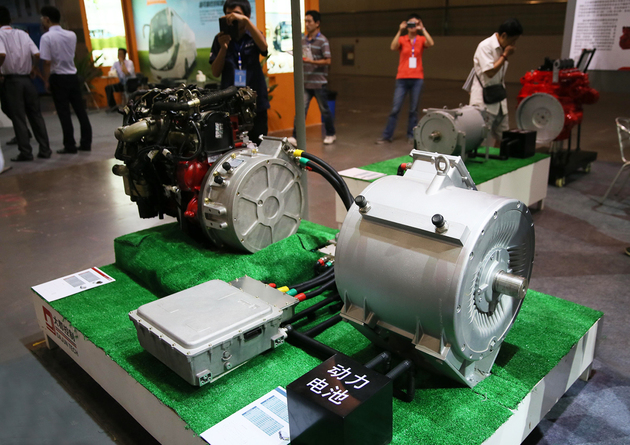
Photo/VCG
Mar. 26 (NBD) -- A great amount of power batteries are expected to reach their end of life by 2019 or 2020, Mo Ke, chief analyst with research firm RealLi Research, told NBD.
Data from Shenzhen Gaogong Industry Research Co., Ltd. shows that the amount of recycled power batteries will soar by 129.99 percent year over year to 63,900 tonnes this year, and will grow sharply to 247,600 tonnes by 2020. This means the recycling market will top 10 billion yuan (1.6 billion U.S. dollars).
A number of listed companies, therefore, are making inroads into the power battery recycling sector, in an attempt to guarantee a stable source of raw materials, reduce costs, and create a closed-loop industrial chain.
Early this month, Camel Group Co., Ltd., an integrated high-tech enterprise specialized in the R&D, production, sales and recycling of advanced lead acid batteries, made an announcement saying it plans to invest 5 billion yuan (791.2 million U.S. dollars) to build a power battery echelon use and regeneration industrial park, which is designed to have a yearly waste battery recycling capacity of 300,000 tonnes as well as corresponding cathode material production capacity.
Battery material suppliers like Zhejiang Huayou Cobalt Co., Ltd. and Xiamen Tungsten Co., Ltd., vehicle manufacturers such as BYD, as well as third-party recycling institutions like GEM Co., Ltd. and Miracle Automation Engineering Co., Ltd. are also seeking opportunities in the burgeoning market.
The recycling of power batteries could be conducted in two ways: echelon use and resource recycling, with the first being an ideal option.
However, the echelon use of recycled batteries is not an easy thing.
Due to different materials, formulas, specifications, and structure adopted by battery makers, there is a great variety of battery models. Meanwhile, the production capacity is scattered, adding difficulties to echelon use, as each unit of scrapped battery should be tested, reclassified and regrouped in the echelon use process, said Wang Nan, director of echelon use research at China Aviation Lithium Battery Research Institute Co., Ltd.
Also, breakthrough is needed in the field of battery disassembling and extraction, an industry insider told NBD.
The core technology of power battery recycling is to adopt chemical solvent with proper formula to extract effective ingredients and then transform them into battery materials. However, the formula is the top secret of power battery enterprises. This means new-energy vehicle makers or third-party recycling institutions will face great difficulties in gaining access to the formula, the insider noted.
Email: lansuying@nbd.com.cn


 川公网安备 51019002001991号
川公网安备 51019002001991号





